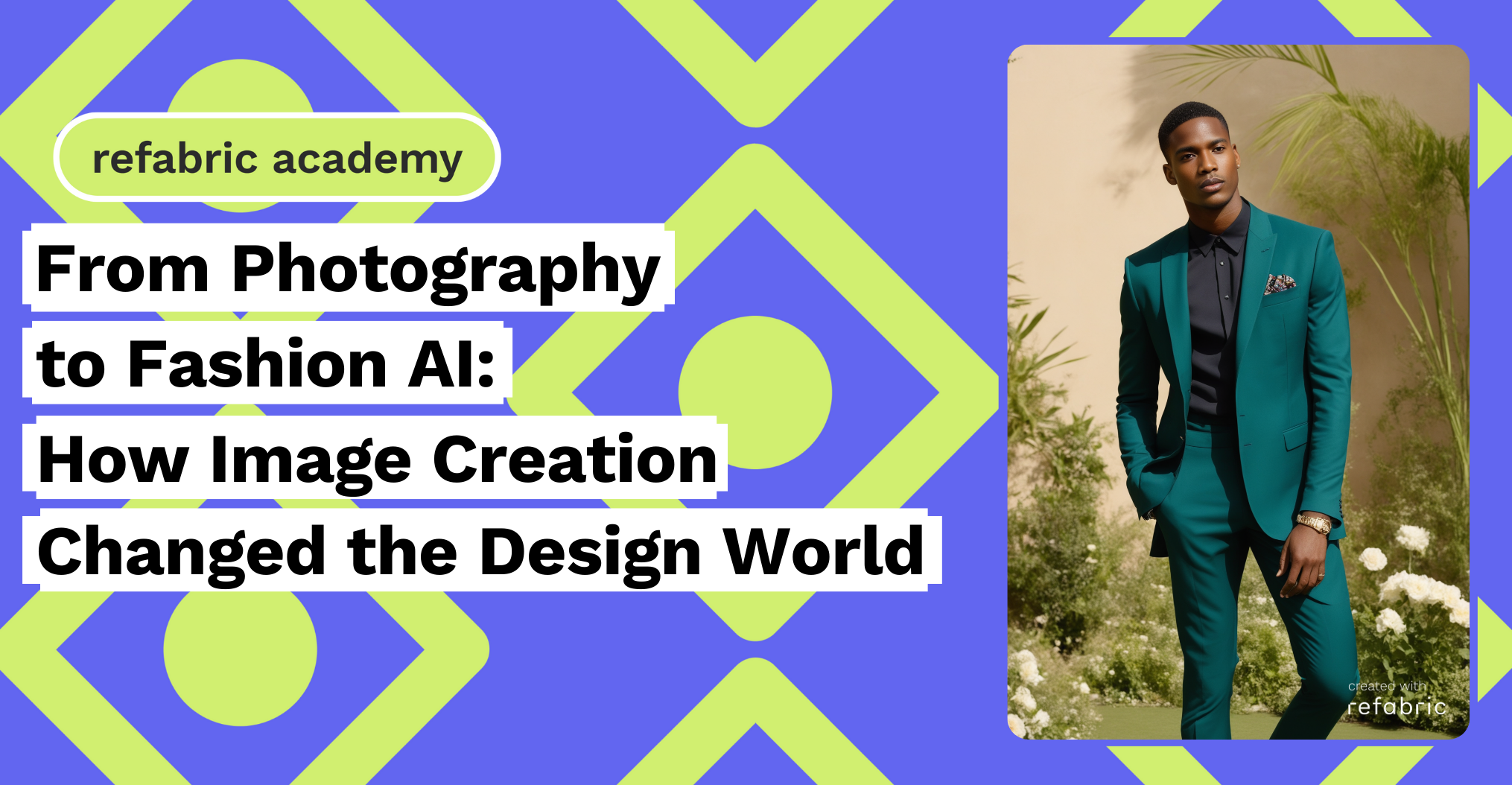Fashion AI has become an essential force in fashion design, transforming how designers conceptualize and create. Image has always been at the heart of fashion, but generative fashion AI takes it further by merging archiving, image creation, and design into a seamless process. With fashion AI, unique figures and stylish looks can be generated in an instant, bringing the photoshoot closer to the design stage and offering fresh perspectives. This revolution in image creation has reshaped how designers envision and develop new products, making the creative muse a tangible presence in the design process. Here are some ways AI-driven image creation is changing the fashion landscape.
Historically, there have been many different ways to create images. Humanity’s desire to remember and archive things has led to the exploration of different mediations. Photography was one of the biggest inventions that helped store moments, and memories, which also expanded its own purpose by contributing to the fashion world and capturing styles and also important fashion moments. In 2022, generative AI has taken over the internet world for good and become the most famous phenomenon of early 2023.
In 2024, we are still working and thinking about generative AI systems including image generation, chatbots and fashion AI tools. This revolutionary step has also changed the way we think about image generation for good, thinking about how AI regenerates from big databases and creates one and only, unique looks.
Capturing the Moments, Creating Unique Looks
Fashion AI works by a technique called “diffusion” which is the common technique that is used by most image generation tools. Image diffusion works by algorithms that diffuse big databases of images that have been categorized. The target images also receive Gaussian noise repeatedly until the significant parts of the images are not recognizable anymore.
In that sense, with fashion AI design, “prompting” becomes the “shutter release” in the camera and the designer at the same time. It is being seen and seeing coming together, creating unique looks that haven’t existed before. By that, fashion AI brings itself closer to photography, capturing a collection of diffused images in a harmonious way.
Similarly, photography was seen as a revolutionary invention in its early emergence. As the technologies get faster, the muse comes closer to the end product each time. The ease of use and capability of AI image generation to produce elegant graphics from any English-language text set it apart from these technologies. It functioned similarly to an unreliable, sluggish, and unexpected search engine for bringing up eerily customized original photographs. This experience was frequently likened to enchantment by commentators. Fashion AI tools are also following in the footsteps of their image generator siblings, creating original styles in seconds by prompting.
Photo Shooting and Fashion Design with Fashion AI
With fashion AI, photo shoots and fashion design converge like never before. Capable of creating and designing simultaneously, fashion AI revolutionizes both image creation and photography. While photography draws its inspiration from the visual world, generative AI takes its muse from vast visual databases, referencing rather than replicating. This process produces images that have never truly existed, unlike photography, which captures and immortalizes the moment. In fashion AI design, these imagined visuals come to life as clothing, making dreams tangible through diverse fabrics, layers, and colors created by diffusing and reimagining images from extensive databases.
Refabric’s photo shooting tool enhances this creative journey, offering designers the ability to visualize and refine their concepts in an instant. With this tool, designers can experiment with style, lighting, and textures digitally, allowing for boundless iterations before a piece ever enters physical production. Refabric allows brands and designers to create realistic, high-quality images of their products on AI-generated models, tailored to different races, genders, and body sizes. This innovation promises to streamline the fashion cycle, from design to marketing, while offering sustainable and cost-effective solutions.
The 2020s are likely to be defined by the impact of generative AI technologies—from fashion AI design to GPT language models and music generators. Generative AI has forever transformed our concept of images, profoundly affecting the fashion design world. Fashion AI has become an essential tool for inspiration, inviting designers to explore a muse that has never existed before, one crafted purely from archival imagery and thoughtful prompts.
